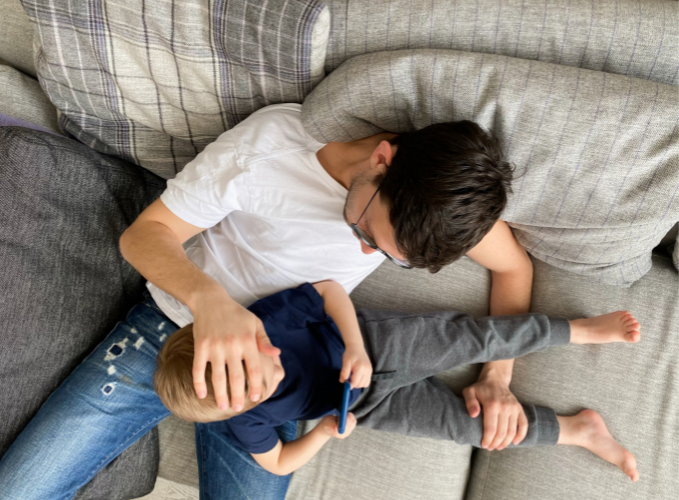ADHD, Emotional Regulation and Managing Family Conflict: Replacing Time-outs with Time-in or Time-apart
 Many parents of ADHD children and teens come into my office and report that nothing really works in terms of discipline and consequences. “My son just doesn’t care what we take away,” or “my daughter laughs when we ground her.” While all kids balk at rules sometimes, those with ADHD tend to squawk more often and louder. Commonly associated with ADHD are emotional regulation and executive functioning challenges, so instances where your child or teen needs to manage anger, inhibition or flexibility, for instance, can be difficult. How you decide to handle any family conflicts that might arise is important. To rein in and redirect undesirable behaviors, parents have to respond instead of react and rely on pre-arranged interventions. The Family Emotional Regulation Method (FERM) can help your family make well-considered decisions about how to manage emotional meltdowns and behavioral infractions–with options that foster connections instead of conflict.
Many parents of ADHD children and teens come into my office and report that nothing really works in terms of discipline and consequences. “My son just doesn’t care what we take away,” or “my daughter laughs when we ground her.” While all kids balk at rules sometimes, those with ADHD tend to squawk more often and louder. Commonly associated with ADHD are emotional regulation and executive functioning challenges, so instances where your child or teen needs to manage anger, inhibition or flexibility, for instance, can be difficult. How you decide to handle any family conflicts that might arise is important. To rein in and redirect undesirable behaviors, parents have to respond instead of react and rely on pre-arranged interventions. The Family Emotional Regulation Method (FERM) can help your family make well-considered decisions about how to manage emotional meltdowns and behavioral infractions–with options that foster connections instead of conflict.
Rethinking Time-outs for ADHD emotional regulation

Many parents rely on using Time-outs when emotions start to escalate in the family. But Time-outs focus on the “wrong-ness” of the action, rather than on the child or teen’s accountability. Most kids experience them as punishment, which makes them feel worse about themselves. They frequently feel like they are ‘bad’ people who are engaging in ‘bad’ behaviors that, because of their ADHD, they often can’t control.
In addition, Time-outs usually don’t teach emotional regulation because learning this key executive functioning skill requires modeling and support–not isolation. Of course, a child in Time-out will eventually calm down, but they usually don’t come away from the experience with the necessary tools for self-awareness to use the next time they become triggered and dysregulated.
What’s behind big emotions

Let’s look at the biology of a quick, intense rise in emotions–the amygdala takeover. It takes around six seconds for the adrenaline released during an amygdala takeover to dissipate in the brain, but up to 10-20 minutes for the effects on the body to wear off. During this time, the ‘thinking brain’ has gone offline, and emotions are ruling the day.
This is why you can’t negotiate anything in these moments. Creating a plan of appropriate options for settling down and self-soothing is what’s called for instead.
Using a Time-in or Time-apart to support ADHD emotional regulation
 Isolating your upset child or teen to cool down when emotions intensify can be helpful for some people but provocative for others. While using a Time-out, such as sending your 10 year-old son to his room, when he is in a meltdown might offer you some relief, it may not be the most effective solution for him.
Isolating your upset child or teen to cool down when emotions intensify can be helpful for some people but provocative for others. While using a Time-out, such as sending your 10 year-old son to his room, when he is in a meltdown might offer you some relief, it may not be the most effective solution for him.
Instead, he may need a quiet few moments with you on the couch, rubbing his head and reading a book. This is an example of using a Time-in to manage ADHD emotional dysregulation.
Though it might be the opposite of what you feel like doing when you are activated, give it a try. Exercise self-Control (one of my 5 C’s of ADHD Parenting) by taking a deep breath, going to the bathroom to get centered, and then showing up for a hug and that quiet activity.
On the other hand, after you and your 16 year-old daughter argue about her curfew, you may need 20 minutes alone with a cup of tea, and she may want 20 minutes to listen to some music on her bed. Both of these can happen with a Time-apart. It’s not punitive; it’s recuperative.
Learning the Family Emotional Regulation Method (FERM)
The FERM relies on a pre-negotiated intervention that gives you options in the moment. As a family, talk about the pattern of emotional eruptions and lay out some strategies in advance. This way, you can better cope with what is going on when the ‘thinking brain’ goes offline. In addition, you avoid power struggles that result in banishing your ornery teen or crying child to their room out of anger and frustration. You’re also not stuck needing to invent interventions off the cuff. Instead, you integrate self-soothing strategies that work for everyone.

The Family Emotional Regulation Method is based on creating an environment for families living with ADHD that teaches self-regulation through collaboration when family members can think clearly and aren’t feeling upset. This strategy relies on the positive aspects of your parent-child connection–the bond that incentivizes cooperation in the first place.
Here’s how to create your FERM:
1. Identify the patterns
Set aside a time for one or two family meetings (15 minutes maximum) to discuss and name the triggers and characteristics of family meltdowns. Identify signs that emotions are heating up. What contributes to their escalation? What would help everybody slow down, recover and pivot? How long is an ideal recovery time for you, your child or teen? Write these down.
2. Think about your own responses:
How are you responding to your child or teen’s intense emotions? How would you like to respond? How can you help your child or teen with ADHD learn emotional regulation strategies? What tools could help you stay settled? Write these down for yourself and keep this list on your phone so you can look at it when you start to feel overwhelmed.
3. Improve cooperation:
Use everybody’s desire for fewer arguments and more peace in the house as motivation for implementing your family plan. This lies at the heart of kids’ buy-in. When you ask for their opinions and include them in your strategies, kids with ADHD feel more interested because they are working with you: you are allies on the same team to reduce conflict and nurture closeness.
4. Create your FERM chart:
Download your free FERM Chart Template handout here!
Example:

– Trigger: Setting a time limit on playing Roadblocks or Minecraft
– Kid’s Typical Reaction: Yelling and protesting
– Your Typical Response: Taking away screen privileges for the rest of the day
– Your New Planned Response: Calling a break in the action for agreed upon amount of time before escalation
– Time-Apart or Time-In Option: Ask whether your child wants a Time-in (activity together from list) or a Time-Apart (choice of self-soother)
– Recovery: Quick conversation that explores accountability and next steps
5. Practice makes progress:
Create realistic goals, aim for steadiness instead of perfection and remember that everybody is doing the best they can in a given moment with the tools available to them. It takes time and practice to change family habits of negative interactions. Try out an intervention, expect to make adjustments and then try it again.

Read more blog posts:
- ADHD and Negativity: Why ADHD kids and teens say “No” and how to help them communicate
- Tone of Voice Awareness in Neurodiverse Families: How to practice self-regulation in family conflicts
- Cooling Down Conversations in Neurodiverse Families: De-escalate and do-over with ‘WAIT-Now’ and ‘Take Back of the Day’
Watch on Dr. Saline’s YouTube Channel:
- How Do I Manage ADHD and Emotional Explosions? (ADDitude Q&A with Dr. Saline)
- Anger Management with ADHD (ADDitude Q&A with Dr. Saline)
- How to Get Your Teens to Open Up (WWLP 22 News interview with Dr. Saline)
Sources: Cuncic, A. (2021, June 22). Amygdala Hijack and the Fight or Flight Response. Verywell Mind. Retrieved November 17, 2021, from https://www.verywellmind.com/what-happens-during-an-amygdala-hijack-4165944.
